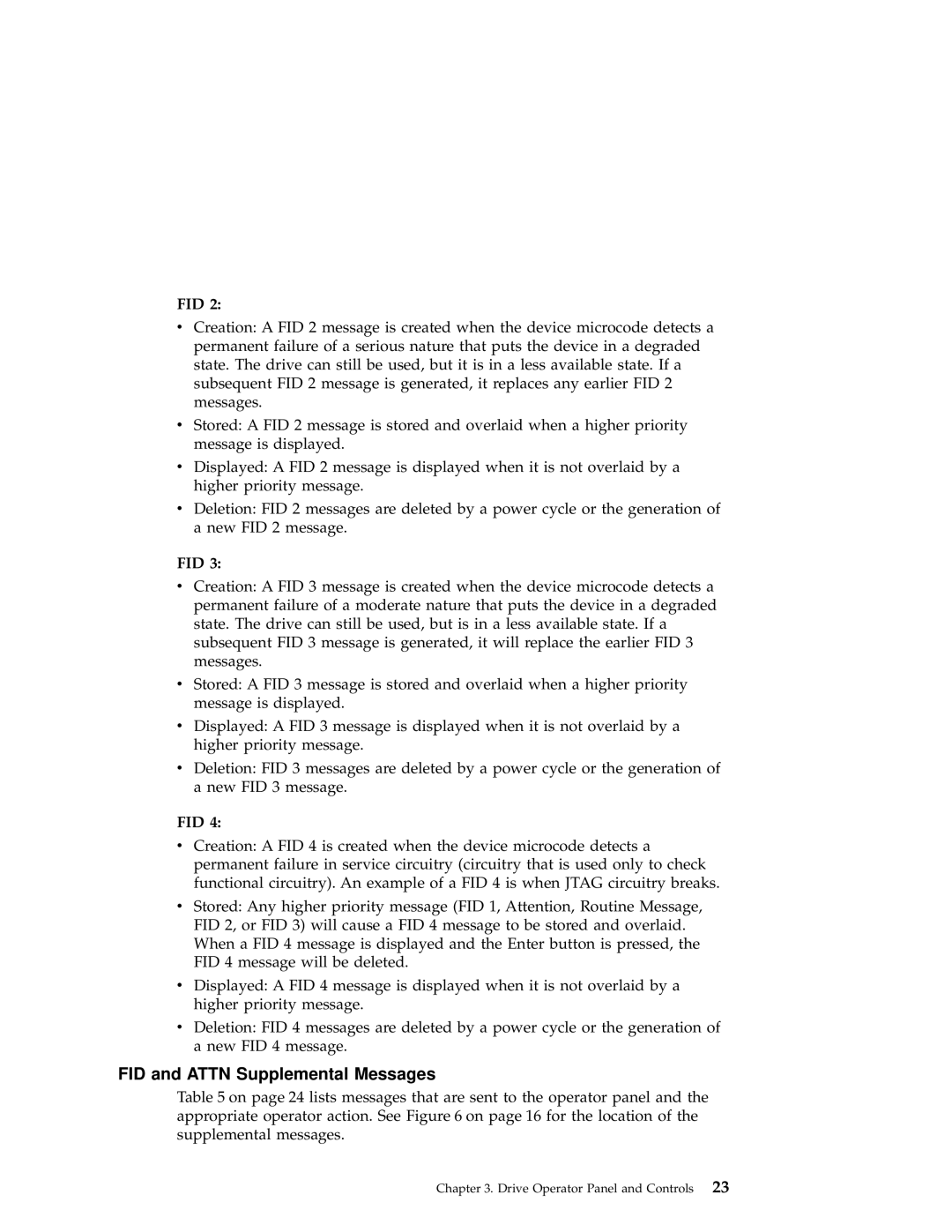FID 2:
vCreation: A FID 2 message is created when the device microcode detects a permanent failure of a serious nature that puts the device in a degraded state. The drive can still be used, but it is in a less available state. If a subsequent FID 2 message is generated, it replaces any earlier FID 2 messages.
vStored: A FID 2 message is stored and overlaid when a higher priority message is displayed.
vDisplayed: A FID 2 message is displayed when it is not overlaid by a higher priority message.
vDeletion: FID 2 messages are deleted by a power cycle or the generation of a new FID 2 message.
FID 3:
vCreation: A FID 3 message is created when the device microcode detects a permanent failure of a moderate nature that puts the device in a degraded state. The drive can still be used, but is in a less available state. If a subsequent FID 3 message is generated, it will replace the earlier FID 3 messages.
vStored: A FID 3 message is stored and overlaid when a higher priority message is displayed.
vDisplayed: A FID 3 message is displayed when it is not overlaid by a higher priority message.
vDeletion: FID 3 messages are deleted by a power cycle or the generation of a new FID 3 message.
FID 4:
vCreation: A FID 4 is created when the device microcode detects a permanent failure in service circuitry (circuitry that is used only to check functional circuitry). An example of a FID 4 is when JTAG circuitry breaks.
vStored: Any higher priority message (FID 1, Attention, Routine Message, FID 2, or FID 3) will cause a FID 4 message to be stored and overlaid. When a FID 4 message is displayed and the Enter button is pressed, the FID 4 message will be deleted.
vDisplayed: A FID 4 message is displayed when it is not overlaid by a higher priority message.
vDeletion: FID 4 messages are deleted by a power cycle or the generation of a new FID 4 message.
FID and ATTN Supplemental Messages
Table 5 on page 24 lists messages that are sent to the operator panel and the appropriate operator action. See Figure 6 on page 16 for the location of the supplemental messages.
Chapter 3. Drive Operator Panel and Controls 23
